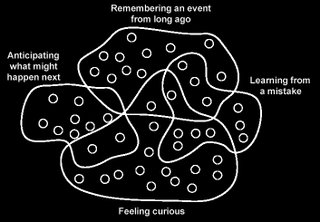Designing common sense
Well, the easy goal is to build a ‘thinking’ system resourceful enough to combine the advantages of many different ways to think about things, by making use of many types of mechanisms for reasoning, representation and reflection.
But there are two questions; how can we build a machine with the intelligence of a person but more importantly, why would we want to?
The world is getting very complex and quite seriously, we need help to decipher the information overload to decide the proper scenario that we would want to follow.
Read: our common sense is becoming useless with so much stimulation. We need help – cognitive help – to redefine our human common sense.
There is no shortage of ways to recognizing faces, parsing the syntactic structure of sentences, or planning paths through cluttered spaces but these all fail miserably in comparison to people when it comes to common sense.
It’s simple to focus on solutions that can be captured in the form of single, simple method, algorithms and representations, but the world is becoming so varied and complicated that any single such solution fails when presented with problems even slightly different from those they were programmed to handle.
Deep Blue, a massively parallel, RS/6000 SP-based computer system that was designed to beat the grandmaster Kasparov, has the IQ of a Stanley 7 oz. light duty hammer. Not more.
Minsky’s Society of Mind theory started it all but it looks like this …

OK – that’s inelegant – so we were discussing something simpler, based on some new mathematical principle or universal method of learning or reasoning but can we realistically expect something comparable to the human mind to be reduced to some simple algorithm or principle given the range of things it must be able do?
Yes.
So for this digital persona, we’re going to try to design a computational model of attitudes - investigating how a persona can be supported by the support of other personas or social agents
Read: mashing non-first-person non-deterministic algorithms using a simulated annealing approach.
Get the mix? If you can - lend us a hand.
But there are two questions; how can we build a machine with the intelligence of a person but more importantly, why would we want to?
The world is getting very complex and quite seriously, we need help to decipher the information overload to decide the proper scenario that we would want to follow.
Read: our common sense is becoming useless with so much stimulation. We need help – cognitive help – to redefine our human common sense.
There is no shortage of ways to recognizing faces, parsing the syntactic structure of sentences, or planning paths through cluttered spaces but these all fail miserably in comparison to people when it comes to common sense.
It’s simple to focus on solutions that can be captured in the form of single, simple method, algorithms and representations, but the world is becoming so varied and complicated that any single such solution fails when presented with problems even slightly different from those they were programmed to handle.
Deep Blue, a massively parallel, RS/6000 SP-based computer system that was designed to beat the grandmaster Kasparov, has the IQ of a Stanley 7 oz. light duty hammer. Not more.
Minsky’s Society of Mind theory started it all but it looks like this …

OK – that’s inelegant – so we were discussing something simpler, based on some new mathematical principle or universal method of learning or reasoning but can we realistically expect something comparable to the human mind to be reduced to some simple algorithm or principle given the range of things it must be able do?
Yes.
So for this digital persona, we’re going to try to design a computational model of attitudes - investigating how a persona can be supported by the support of other personas or social agents
Read: mashing non-first-person non-deterministic algorithms using a simulated annealing approach.
Get the mix? If you can - lend us a hand.
Tags: digital identity, artificial intelligence, society, cognitive architecture,
5 Comments:
Interesting, David.
Very nice! I like it. st patricks day puzzles
Sweetie, you need to get out more and talk to blood pumping, pulse beating, upstanding citizens.
The virtual social network is powerful because it alleviates lonliness and boredom, 2 very serious human conditions. And because its interactive, convienent and niche, it provides a crutch to those that find real world human connectivity challenging.
We don't need computers to redefine our human common sense, we need stronger families, friends and communities. A little more of the human touch.
gg
Sweetie, you need to get out more and talk to blood pumping, pulse beating, upstanding citizens.
The virtual social network is powerful because it alleviates lonliness and boredom, 2 very serious human conditions. And because its interactive, convienent and niche, it provides a crutch to those that find real world human connectivity challenging.
We don't need computers to redefine our human common sense, we need stronger families, friends and communities. A little more of the human touch.
gg
Sweetie, you need to get out more and talk to blood pumping, pulse beating, upstanding citizens.
The virtual social network is powerful because it alleviates lonliness and boredom, 2 very serious human conditions. And because its interactive, convienent and niche, it provides a crutch to those that find real world human connectivity challenging.
We don't need computers to redefine our human common sense, we need stronger families, friends and communities. A little more of the human touch.
gg
Post a Comment
<< Home